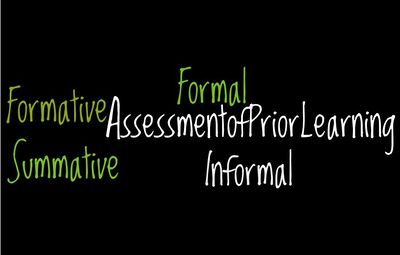Purpose of assessment
| Learning and Teaching in Practice | |
|---|---|
| Module 6: Critique learning design | |
| Assessment theories, principles and practices | Introduction | Purpose of assessment | Effective assessment | Methods and tools | Summary |

The main purpose of assessment is to improve learning and teaching. Formative assessment can be used to support, structure and enhance the learning and teaching process as well as helping students and teachers to monitor understanding and progress. Summative assessment measures whether learning outcomes have been achieved, and is an indicator of successful (or not) course completion.
Contents
Types of assessment
Assessment is a huge and varied area of teaching and learning. Assessment possibilities are only limited by imagination as they can occur in many varied forms. Five main categories of assessment are listed.
- Formative
- Informal or formal and used to provide feedback and support learning.
- Summative
- Formal only - measures whether learning outcomes are met, and learning achieved.
- Self-assessment
- Informal or formal - students check their learning against specific criteria or reflect on their learning.
- Peer-assessment
- Informal or formal - students give feedback to other students on their work.
- Assessment of Prior Learning (APL)
- Formal - includes cross credits, Recognition of Prior Learning (RPL) and Credit Transfer. For RPL, previous experience is used to demonstrate how learning outcomes of specific courses are met.
- At Otago Polytechnic certain qualifications can be obtained through an APL facilitated process where learners develop case studies of their previous experiences (work and life) to demonstrate how they meet the requirements of the chosen graduate profile. See CapableNZ, Otago Polytechnic.
|
Why do we assess?
Given that many tools and methods that can be used for assessment, it is useful to think about the reasons for assessing.
|
Phil Race, Sally Brown and Brenda Smith (2005) describe several reasons for assessing, including:
From: Brown, S., Race, P., & Smith, B.(2005). 500 tips on assessment. London: Routledge Falmer. (pages 5-7.)
|
| For Emilia, the purpose of assessment is to both guide students' learning and to ascertain that they have met the learning outcomes. So assessment is both formative and summative.
By using an e-portfolio method, students are encouraged to be creative in what they produce for the assessment, and this helps to make their learning more interesting. The evidence and reflections produced in the e-portfolios must demonstrate how the learning outcomes are met, and their work is going to be graded using criteria. |
| Using assessment as an opportunity to provide feedback to students on their knowledge and performance is Brett's prerogative. He regards this as especially important in the standards-based assessment environment that influences the design of their courses. He wants to formalise the formative assessments that he is going to get his team to introduce, and decides to develop some draft checklists for the lecturers to comment on. He intends to include spaces for giving detailed written feedback to students.
He realises that a similar format could be used for formalising self-assessment and peer-assessment. However, Brett needs to look into this type of assessment first. He has discovered Dorothy Spiller's (2012) very useful Assessment Matters: Self Assessment and Peer Assessment booklet produced by the University of Waikato Teaching Development Unit. |
|
Criteria and standards-based assessment are compared in the University of Western Sydney (UWS) Assessment Guide.
|
References
Spiller, D. (2012). Assessment Matters: Self Assessment and Peer Assessment, Teaching Development Unit, University of Waikato. Retrieved from http://www.waikato.ac.nz/tdu/pdf/booklets/9_SelfPeerAssessment.pdf

